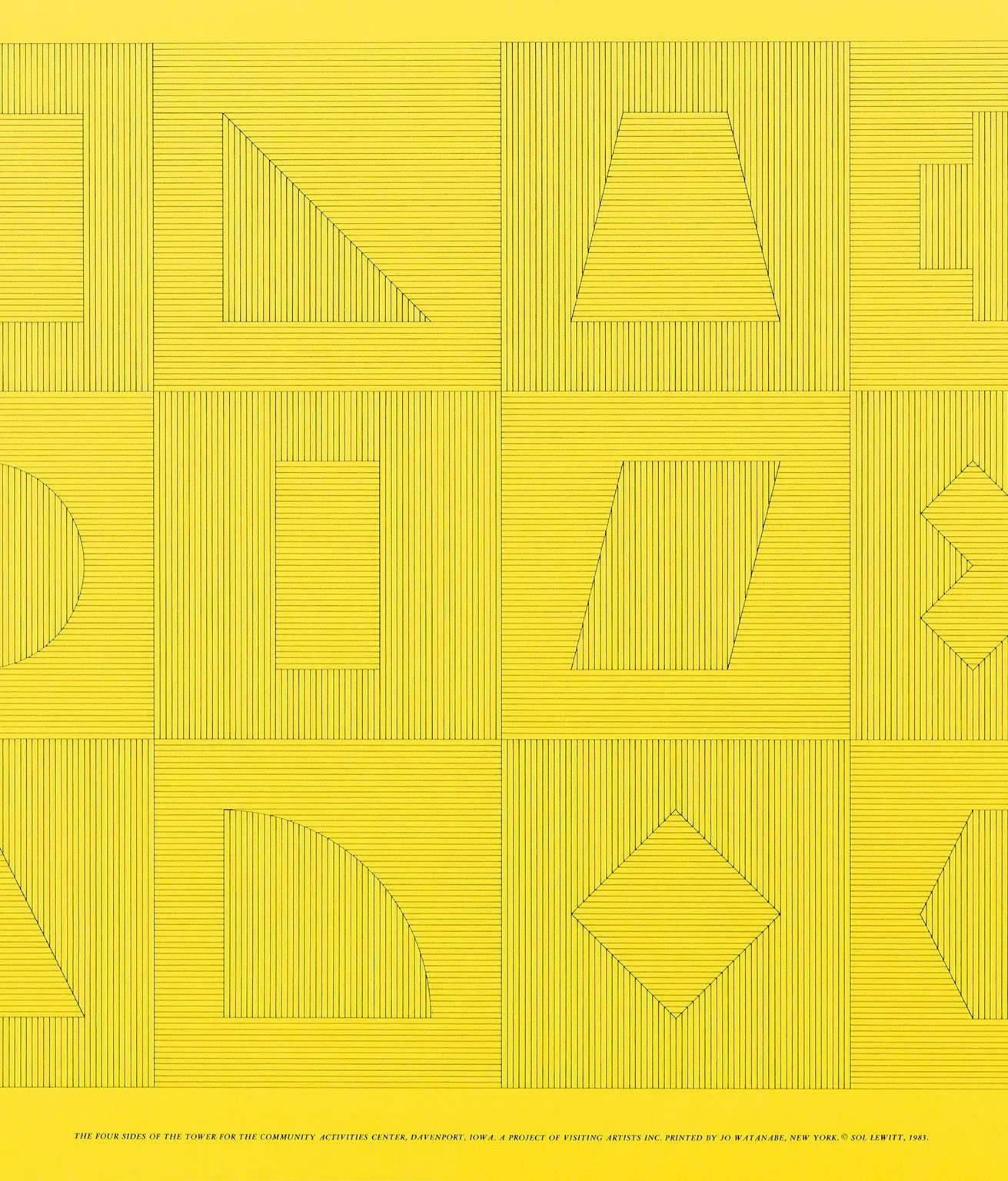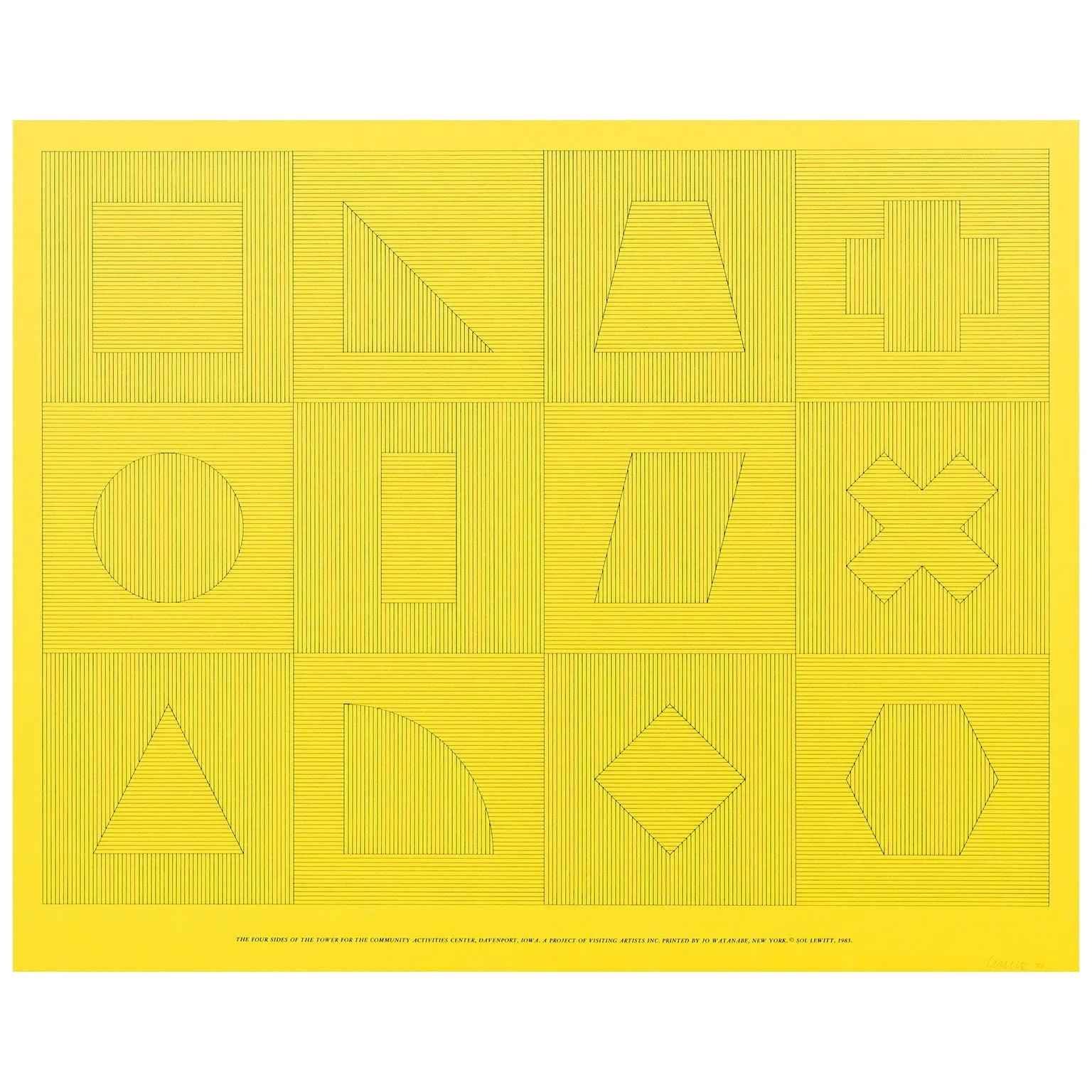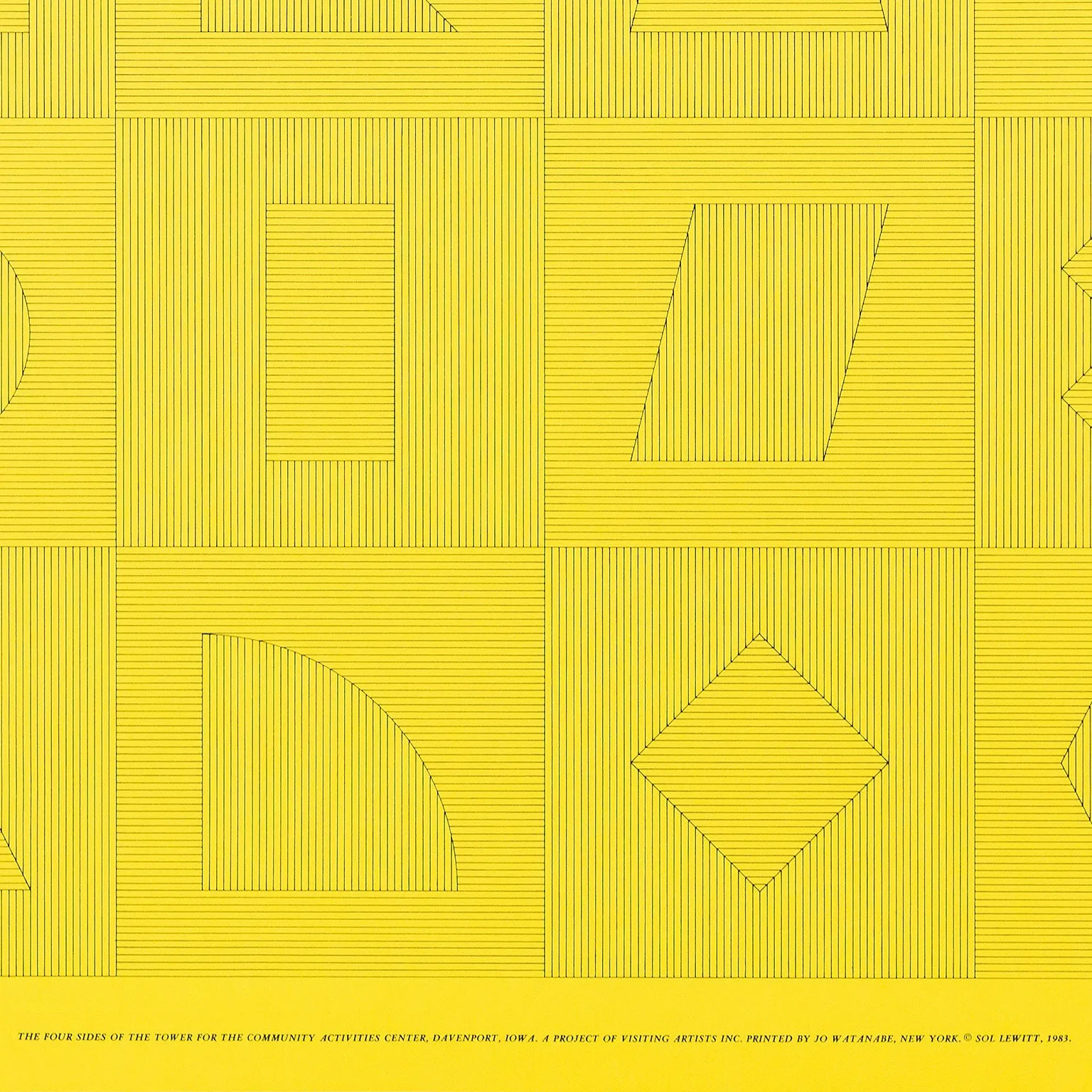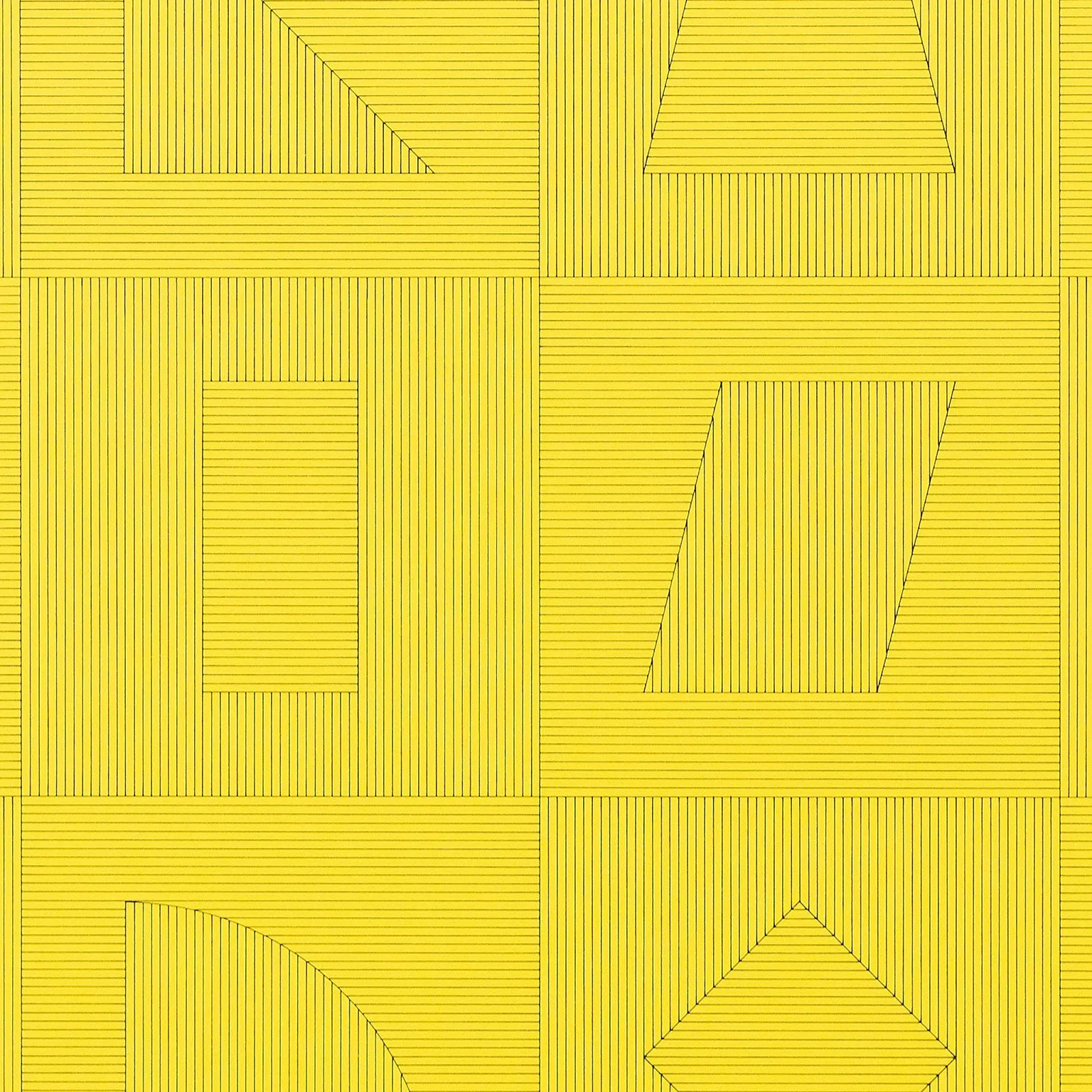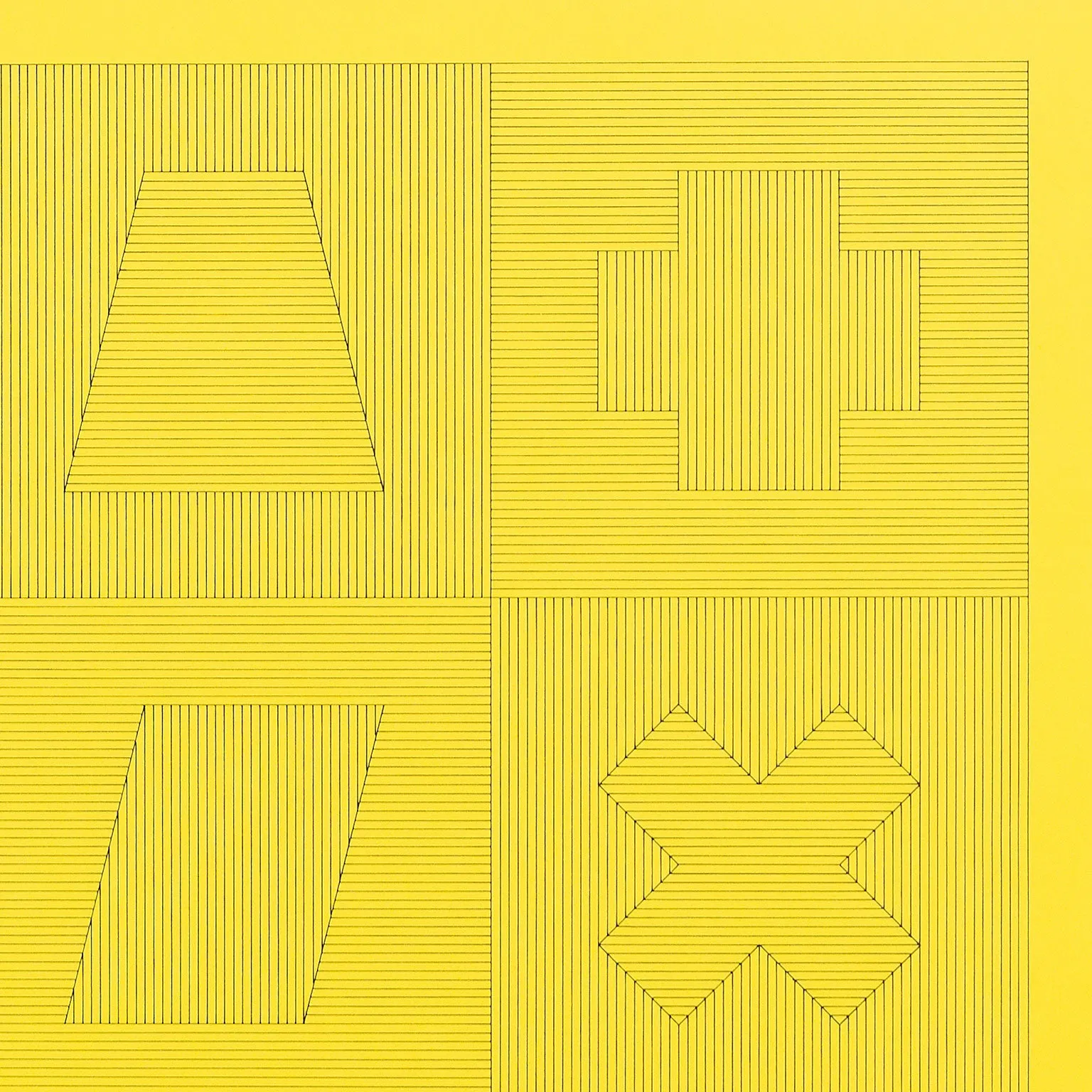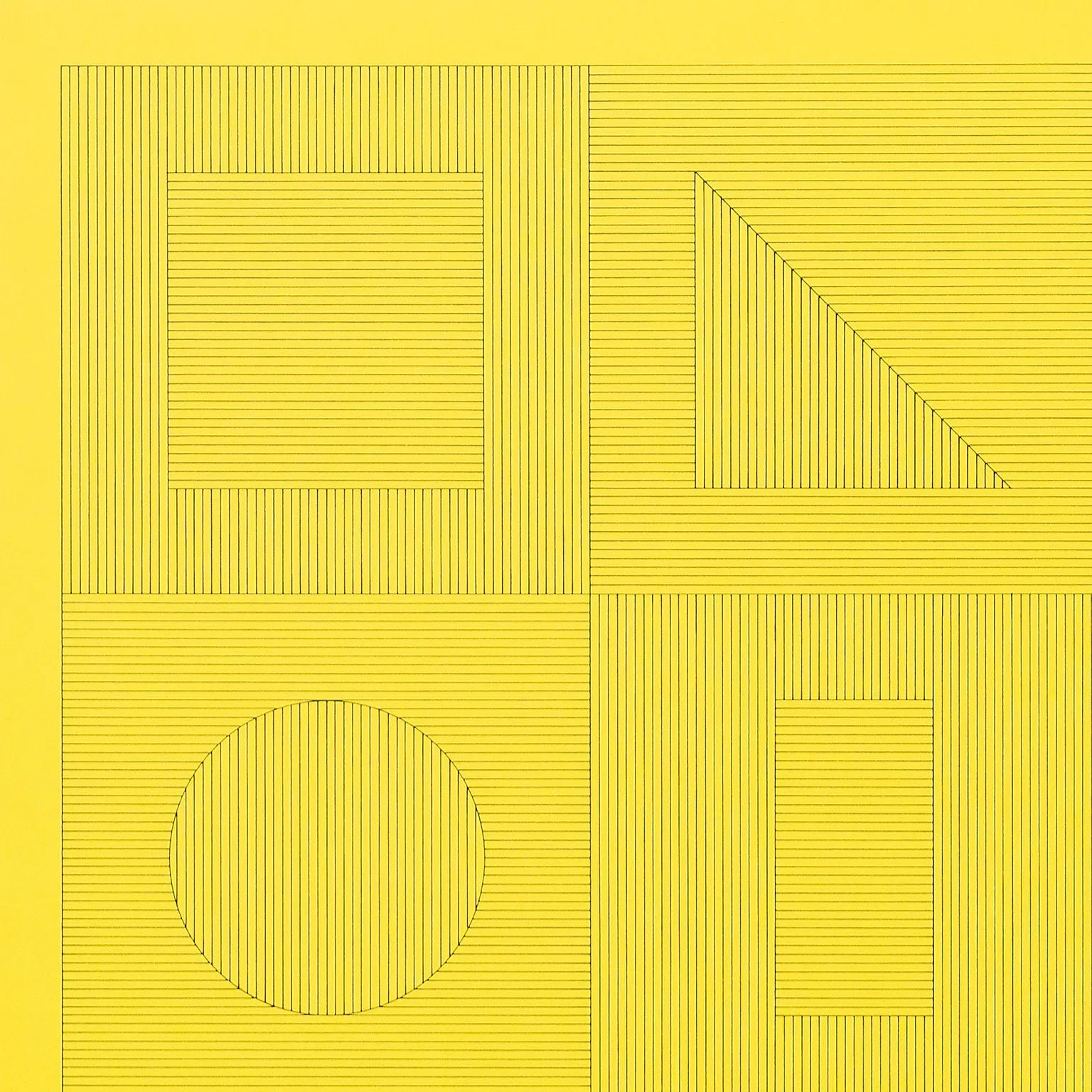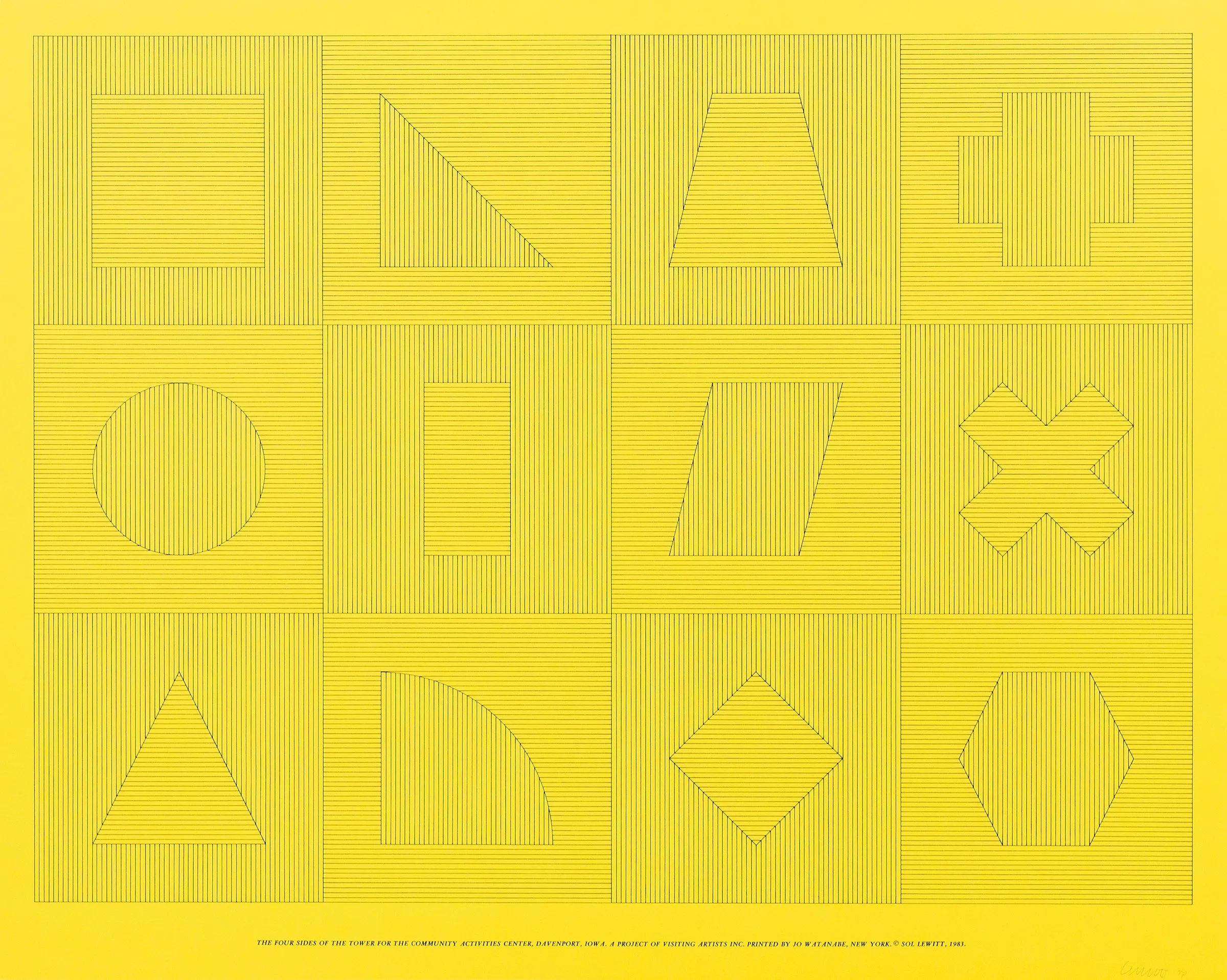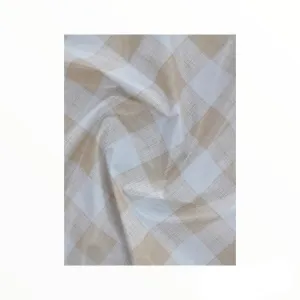(1928-2007) is an important contributor to the 20th century's most cerebral "isms" notably minimalism and conceptual art.
Many of his works were created from elaborate and detailed instructions rather than his own hand or labor. His (in)famous large-scale "wall drawings" for example, destabilized and expanded the definition of authorship as they were executed by teams using instructions. Furthermore these classic "wall drawings" were often temporary - only lasting the duration of an exhibition.
Influenced by his time as an architect, LeWitt's artistic practice was rooted in a deep appreciation of geometric forms. Utilizing ratios, patterns, and formulas, the artist would create geometric works across many mediums.
Set on a vibrant canary background, this evocative silkscreen features a grid of twelve squares, each containing distinct geometric shapes realized through a series of contrasting line-work.
In the following year, this striking composition would be realized as, which applies the 12 geometric designs across four sides of its rectangular, steel surface. The sculpture, which stands at over 21-feet tall, now stands in the plaza in front of the Figge Art Museum in Davenport Iowa. It remains one of the artist's most beloved examples of public art.
Click here for examples of this work in and.
Today, LeWitt's work is represented in numerous public institutions including the MoMA (New York), the Tate Modern (London), the National Gallery of Art (Washington, D.C.), and the Centre Pompidou (Paris), among others.
Questions about this piece? Contact us or call 1.416.704.1720.
Visit our Toronto gallery on .
"The Four Sides of the Tower for the Community Activities Center, Davenport, Iowa"
USA, 1983
Silkscreen
Signed and TP (Trial proof) , lower right
Outside an edition of 30
25.5"H 32"W (work)
Published by Rhona Hoffman Gallery, Chicago
Very good condition.

